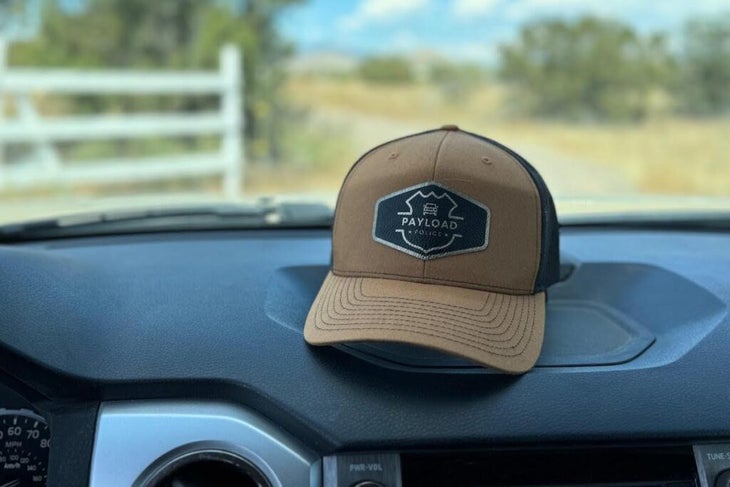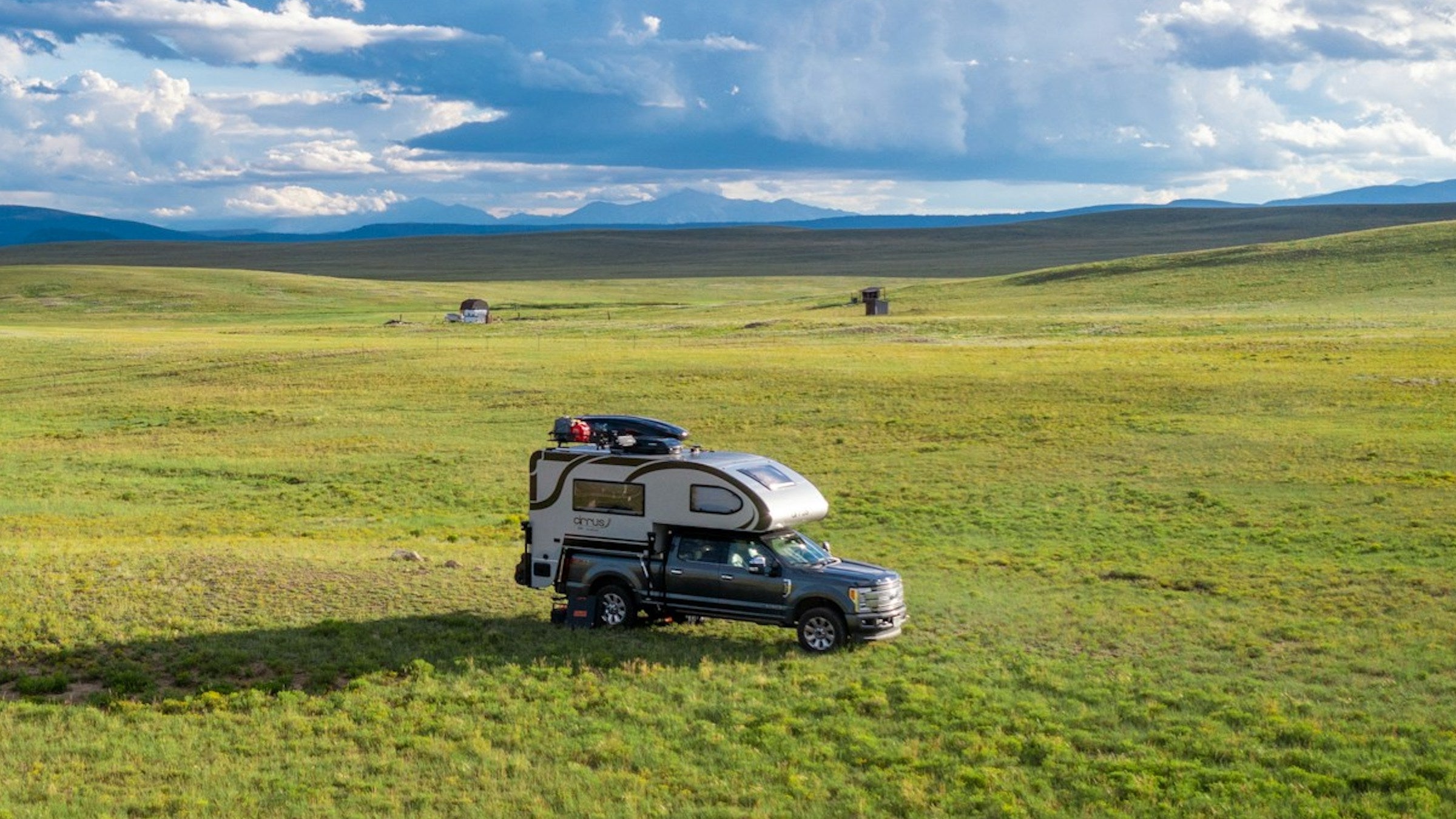If you’re reading this, you likely already drive a truck, or you’re in the market for a heavy-duty vehicle to support your adventures. Chances are also good that you’re familiar with terms like “payload” and “gross vehicle weight rating,” and maybe even refer to the latter as “” in casual conversation. Well, I’d like to introduce you to a term you may not be as familiar with: “payload police.”
Payload police is something of an internet phenomenon. The concept seems to have stemmed from a place of genuine concern for the safety of folks overloading their rigs—and for other drivers sharing the road with those vehicles. But, as with most things on the internet, it’s morphed into a strange subculture of shaming others for not building an adventure rig “correctly.”

These days, if someone posts an Instagram photo of a heavily modified pickup—or even just a simple truck with a camper in the back—some of the first comments will most assuredly be “How far over GVWR are you?” or “What’s it weigh?” Spend a little time , and you’ll no doubt start thinking your truck is too small for the job. Spend a lot of time on these threads, and you’ll probably become convinced you need a three-quarter-ton truck no matter what you plan on using it for. It doesn’t stop there, either. Hop in a three-quarter-ton forum, and you’ll find everyone thinks they need a one-ton.
The dirty truth is that all truck owners think they need a bigger truck. (I know there’s a joke here to be made about bigger not always being better, but I’ll resist the urge.) And while some folks would actually benefit from a one-ton vehicle, not everyone needs to go so far. So, what’s the answer? How big of a truck do you actually need?
Step One: Get Off the Internet
If you’re worried about overloading your rig, you have two options. If you don’t yet have the rig, do a lot of research before you buy and purchase the right truck for the job. And if you already have a truck, modify the one you have accordingly, and resign yourself to the fact that your rig might end up weighing a little more than the GVWR listed on the sticker. Most of all, quit spending so much time in the forums and on Instagram screaming about payload, and go use your truck.
At this point you might be gasping in your chair: Go over the GVWR?! Egads—won’t something terrible happen if I do that? For some context, I called up , who’s been a fixture in the overland industry for years and now runs one of the best overland and off-road shops in the country, Basil’s Garage. In addition to working on rigs of all shapes and sizes, Lynch has also owned his fair share—ranging from an F250 with a home-built flatbed camper, to a first-gen Tundra built for high-speed desert romps. In fact, a of his is what inspired this piece.
View this post on Instagram
“Yes the Tacoma is technically overweight even with very minimal stuff in the back of it,” Lynch says, “but you also see them loaded up all day, every day, and very rarely do people have problems with them.”
Lynch and his team take a nuanced approach to building rigs. They start by considering a truck’s GVWR and payload capacity, and they try to make sure their customers are using the right vehicle at the beginning of a build. Lynch often sees customers purchase the wrong truck—either a vehicle that’s way too overpowered for their intended use, or one that just doesn’t have the payload capacity to handle build they want. If you’re building out a rig, Lynch says, consider consulting with your shop or vehicle outfitter before purchasing a truck. That way, a professional can help guide you in the purchase.
But, at the end of the day, Basil’s Garage will help build just about anything.
“We build a lot of campers on the backs of larger, three-quarter-ton and one-ton trucks and everyone’s like ‘Ah, it’s still over payload.’ But then you also see a contractor’s truck that’s twice as much over payload and has 150,000 miles on it going down the street just fine,” Lynch says. “There are a lot of overweight vehicles out there, and you don’t see them snapped in half on the side of the highway.”
Step Two: Think Carefully Before You Modify
Legality is a funny thing. While you can’t legally increase a truck’s payload in the U.S., you can do it in other places around the world. Take Australia, for example, a country known for having lots of cool rigs, and also a lot more regulations on 4x4s and off-road vehicles than we do over here. For instance, in Australia, you’re typically not allowed to lift a vehicle more than about two inches and your tires can’t stick out past the wheel wells. You can also get ticketed for driving a vehicle that weighs more than its gross vehicle mass (GVM) rating. And yet, unlike Americans, Australians are allowed to increase their vehicle’s GVM. Down Under, you can purchase a kit that consists largely of new suspension components like springs and shocks. Some upgrades also call for new tires with a higher load rating.
Companies like ARB and (which also make suspension kits for U.S. vehicles) invest in serious engineering and get their kits certified with Australia’s Federal Department of Infrastructure and Transport. So, once you add a kit to your rig, you can legally get your vehicle re-registered with a higher GVM.
In Australia, a GVM Upgrade kit can legally double the payload capacity of a 200-series Land Cruiser from 1,422 pounds to 2,888 pounds. Each kit is vehicle-specific, and not all provide gains at that magnitude, but many are still significant.
View this post on Instagram
The bad news is that there is no legal way to increase the payload capacity of your vehicle in the U.S. However, the physics don’t change just because we live across an ocean.
“Legally, if you’re overweight in the U.S., there’s no way around that,” Lynch says. “But, there are lots of amazing products out there that you can combine together to make a truck safely carry a decent chunk of weight over what it’s legally supposed to carry.”
So, if you plan to add a lot of weight to your rig by bolting on accessories or carrying a camper in the bed, make sure to budget for any potential modifications. Updating your suspension setup, regearing the axles to run larger tires, and getting a brake upgrade can easily cost more than $10,000. Then, of course, there’s the matter of legality. Be sure to weigh the costs of those modifications against the hassle of trading in your current truck for something bigger.
Step Three: Consider a Workaround
If you make the appropriate modifications to your rig and you’re still worried about it weighing more than the magic number printed on the door jamb, here may be some workarounds available. In some states, you can . Another option is to remove weight from the vehicle. Doing so will reduce your curb weight, technically giving you more payload. My friend Richard Giordano, an experienced overlander who travels full time out of his truck camper, recently with his Toyota Tundra. He removed the rear seats and opted for a lightweight aluminum bumper and aluminum skid plates rather than heavy steel versions.
“A lot of the time, simpler is better. Keeping lift heights low and tire sizes small is a really good way to keep [your vehicle] drivable even with the extra weight of a rig,” Lynch says.
I’d also encourage you to use one last tool: common sense. Does your truck’s rear suspension look perky, or is it sagging under all the weight in the bed? Does it feel easy to tow your travel trailer, or do you feel like you’re taking your life in your hands every time you hitch up? Consider what you’re hauling, and how often. Don’t put a 3,000-pound camper in the back of a Tacoma and expect your truck to handle well. By the same token, don’t buy an F350 and expect it to handle like a Tacoma. And, no matter what you do, don’t fall victim to the constant, unsolicited shaming of the payload police. This is your rig. You get to choose how you haul with it.


